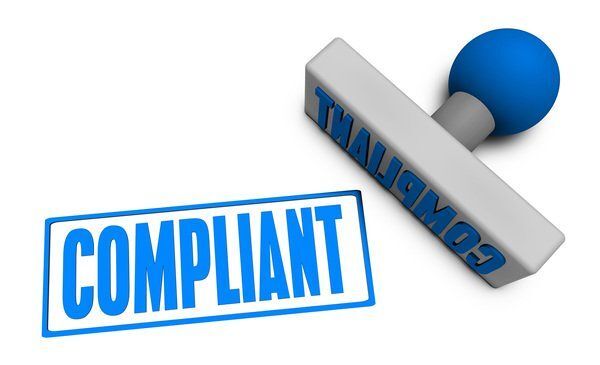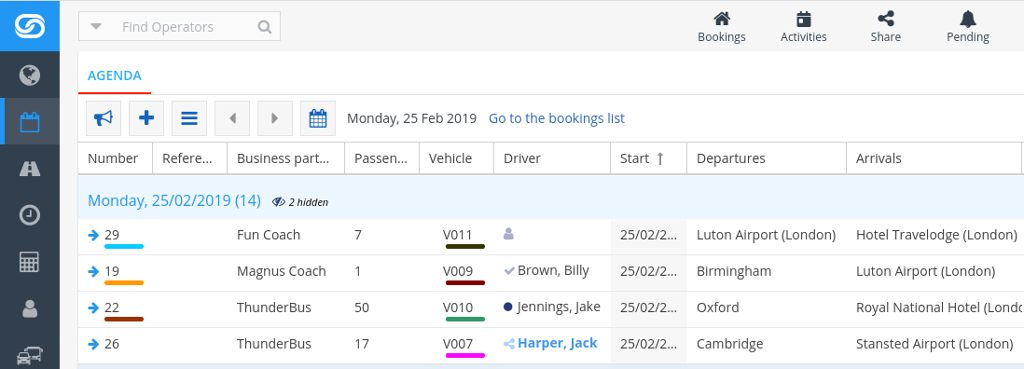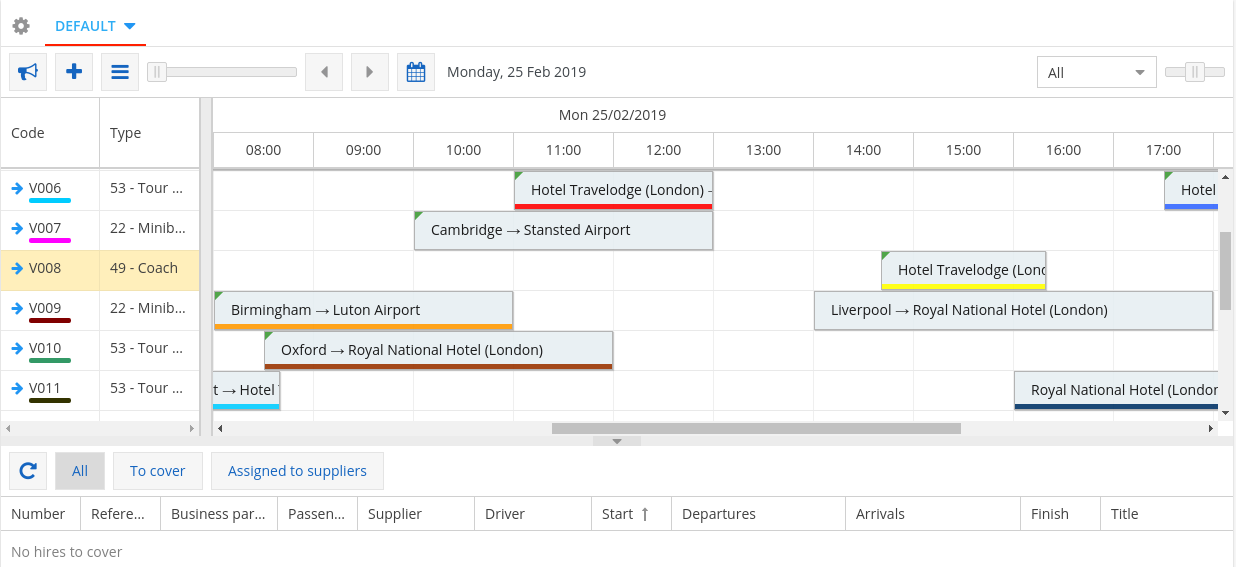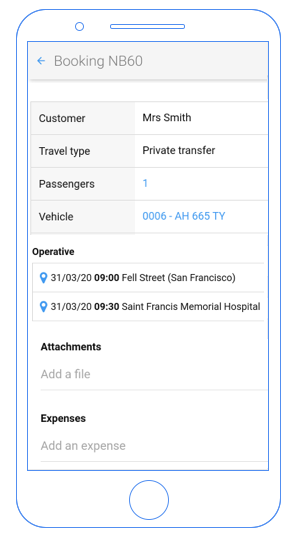
ABOUT SCOTT FRANKLAND
Scott Frankland is Head of Content at Sengerio. His spirit of inquiry leads him to the world of transportation and mobility to connect with the industry’s leading experts and shine a light on the hot topics.

New to the para-transit world? Or thinking of expanding your services?
Welcome to the world of Non-Emergency Medical Transportation (NEMT).
As well as showing you the ins and outs of this industry, this article teaches you 5 powerful tips to rocket your business to the top.
The US National Library of Medicine National Institutes of Health reported that 4 million adults in the US miss or delay non-emergency medical care each year because they cannot find a decent means of transportation to and from healthcare service providers.
In addition to an article from the United States Census Bureau, more than 20% of the US population will be 65 or older by 2030. These statistics show a grave burden for health systems each year.
Fortunately, Non-emergency medical transportation emerged to offer a way for patients and healthcare consumers who face extraordinary barriers to get to their medical appointments and pharmacy.

Non-emergency medical transport offers transportation services to patients not in an emergency situation or in need of an ambulance, for example patients who cannot take the traditional methods of transport for physical or psychological reasons, do not own a personal vehicle, recovering from a sustained injury, recovering from surgery, or simply because of geographic isolation.
NEMT includes a variety of transportation modes, from sedans to wheelchair vans.
A person requiring transport to their health facility can directly contact the NEMT provider they wish to use in order to supply the relevant information regarding their trip, such as the route of the trip, the date and time, and any pertinent information such as Medicaid coverage or alternative methods of payment.
Then, the NEMT provider, typically using specialized software, schedules the trip and allocates the relevant resources to accommodate the client’s request, as well as verify the NEMT qualifications and payments for their client.
Once the trip has been scheduled, the client meets at the assigned location and the NEMT provider takes care of everything else.
The NEMT industry is rapidly evolving in an effort to ensure that patients receive the care that they need.
Globally, the medical transportation market is expected to reach $42 billion dollars by 2024.
Over 72 million Americans are enrolled in Medicaid services. So there is high demand for NEMT services.
In fact, healthcare providers in the United States often fail to meet the needs of patient transportation, opening up the NEMT industry to a multi-billion dollar market mostly serviced by independent firms.

Without doubt, the biggest players in this industry are NEMT brokers, but we will discuss more about that later.
Right now, this article will show businesses desiring to enter the NEMT industry how to do so most efficiently.
At the top of the list is without doubt the fundamental principle of NEMT, ensuring that your company is compliant with the Americans with Disabilities Act (ADA) regulations.
At the core of every profession within the healthcare industry lies the concrete foundation of empathy.
This concept cannot be stressed enough, the client is, above everything else, a person like you and me.
The ADA regulations ensure that the vehicles and services that NEMT clients receive are proper and do not violate their rights.
Therefore, it is essential that your fleet is ADA compliant.

Let’s take a closer look at what it means to have an ADA compliant fleet.
One of the main driving factors of your business is your staff.
The drivers are in direct contact with patients and therefore it is important that they understand their responsibilities.
NEMT users can be vulnerable and fragile, so it is imperative that the driver understands and respects their safety. Keep in mind that driver requirements may differ from state to state, especially in respect to training hours and which type of vehicles can be used for NEMT.
You can check state requirements by contacting the Department of Health and Human Services.
So you’ve established a fantastic fleet that includes compassionate and enthusiastic drivers, well done.
But unfortunately you will not be rewarded just yet.
If you are yet to enter the NEMT industry, be prepared for start-up expenses when creating your pricing model.
This includes registration fees, transportation licenses and permits, and insurance.
As mentioned previously, each state has its own vehicle certification policy which can ramp-up the overall cost to run your fleet.
In addition to ADA regulations, your drivers must also comply with Health Insurance Portability and Accountability Act (HIPAA) standards.

HIPAA certification was introduced as a Federal law in 1996 and ensures that all patient health records remain private and properly managed.
In fact, this applies to all healthcare professionals, emphasizing that NEMT drivers have just as much responsibility.
In order to obtain HIPAA certification, several private companies offer courses to obtain the certification which, naturally, adds an additional expense on top of your existing outcome.
These courses focus on privacy and security awareness training to help prevent professionals from making simple mistakes that violate a patient’s security and compromising the reputation of the company.
However, in addition to informing your drivers of the HIPAA implications, the courses also teach drivers how to stay informed of any changes to the policy.
When it comes to the insurance, you can simply shop around to find the best coverage.
Typically the standard rates are similar from state to state, but if you dig deep enough you should find something better.
By now it’s almost certain that you have a strong fleet that not only shines with professionalism but adheres to all the essential requirements as well.
So it’s time for you to unveil your marvelous service to the world!
Not so fast.
This third tip highlights the importance of researching your industry before you enter.
You wouldn’t jump into a dark hole without trying to figure out what is there beforehand, right?
Exactly.
The next step is to research your competitors as much as possible.
Observe the area in which they work and pay attention to any agencies that license ambulances in your zone.

If you intrude on a small market that will not be great location to build your company. In addition, observe the size of the competitors’ fleets and what types of vehicles they consist of and, as importantly, take a look at their pricing models.
From this information, you will have a more precise idea of how to create your own business plan.
Aside from your competitors, the importance of researching your potential clients cannot be stressed enough.
What services do your local health care institutes, pharmacies, and retirement centers use? Your pricing model must challenge your competitors but also reflect the community’s expectations when it comes to finances.
However, keep in mind that pricing is not the only deciding factor when it comes to choosing NEMT providers.
So what makes your business outshine the others? As with most smaller NEMT providers, you probably offer such a personalized service that your drivers know the exact requirements and preferences of each client.
This close-knit relationship between your staff and clients is what separates you from being the average para-transit service provider to a health care partner.
Naturally, you want your business to grow and expand in the next 5 years.
So how can you expect to maintain the same level or service whilst expanding your resources? This shouldn’t be a problem if you can maintain your service standards, such as: well-organized trip planning, punctual services, well-maintained vehicles and informed drivers.
To meet these standards as you go, it is essential that you utilize efficient automated scheduling and dispatching software (we will discuss more about this in Tip #5).
Don’t forget that in today’s world everything is digitalized, so having your business present on the web is of uppermost importance.
For more information on improving your business’s presence on the web, check out another Sengerio blog post on the subject.
It goes without saying that your business is unlikely to grow if you avoid this fourth tip.
If you want to realize your true potential in this industry and establish sky-high credibility, you should aim to work with NEMT brokers.
The truth is that NEMT brokers want you to succeed- your success is their success.
Note, however, that it is extremely competitive for NEMT providers to rank highly in NEMT brokers’ systems.
This is because of the highly demanding standards. Here’s what they expect from you:
NEMT brokers manage several tasks including the approval and management of a trip, provider credentialing, provider network management, and member eligibility.
States that use the brokerage model use a competitive bidding process to select a broker based on their performance, cost, experience and other important factors.
Likewise, when a broker assumes a NEMT provider, the same standards must also be applied to the provider.
The broker is putting their reputation in your hands. Therefore, your standards must become your virtues.
The final tip picks up where the last one left off.
As mentioned earlier, to enable your business to grow whilst maintaining the level of standards, the key tool is the software you utilize.
If long-term investments are what you desire then the expense of implementing software is absolutely worth it.
Let’s take a closer look at how software can simplify the management of your NEMT business and support your growth.
Transportation management software optimizes the way in which your company functions.
Really, it saves you time and money.
Not only can you get a complete, crystal-clear panorama of all the services of a given time period, you can also manage the details of a specific trip instantaneously.
It centralizes all the process you would normally do mentally or by hand and simplifies it into a unique system.
For instance, when it comes to assigning resources, you can forget trying to calculate everything in your head, the software automatically shows you all the available resources for a service that needs covering.
This also applies to invoicing a booking, in seconds you can generate invoices and send them with the click of a button.

Once your business begins to expand and your fleet grows, you need to keep it as organized as possible to maintain your excellent standards.
It is important that you have the option to subdivide your resources to your preference.
Then, you want a scheduler where you can choose a specific group of resources and visualize their services using a graph.
This way, you have easy and complete access to all the relevant information about the services.
Having an effective driver app can drastically improve the communication between the operational manager and staff.

With a driver app, the driver remains informed of all the service information- even when they are modified!
Moreover, the driver can inform you of all the service information, such as the departure and arrival times, shift information, mileage, and even complete vehicle inspections that are then automatically updated on your system.

It isn’t uncommon that software is regularly updated, therefore you need to ensure that you and your staff stay up-to-date on how to use the software.
For instance, here at Sengerio, we train users on how to utilize our tools to maximize their capabilities and help their business grow.
In addition, we offer demonstrations and remote training sessions, as well as regular check-ins and information regarding any recent updated features.

Check out Sengerio and see how it can improve your business.
Now you’ve learned 5 amazing tips to explode into the NEMT industry.
We’ve covered everything from:
to the last but not least,
We would love to know what you think about this article! Let us know what you think by leaving a comment underneath this post.
Join Sengerio today and see how it can improve your business.

ABOUT SCOTT FRANKLAND
Scott Frankland is Head of Content at Sengerio. His spirit of inquiry leads him to the world of transportation and mobility to connect with the industry’s leading experts and shine a light on the hot topics.